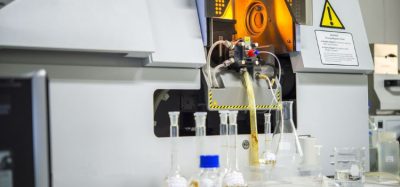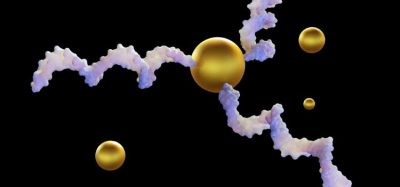Graphene boosts chemotherapy treatment effect
Posted: 9 July 2015 |
Researchers have been studying what happens when different chemotherapy drugs come in contact with the silver coating on catheters with surprising results…


Chemotherapy treatment usually involves the patient receiving medicine through an intravenous catheter.


Elise Ramleth Østli and Ph.D. candidate Federico Mazzola of the Norwegian University of Science and Technology (NTNU) check their experiment. As part of her master’s project at NTNU, Elise Ramleth Østli spent time in Stockholm, studying the tubes used with intravenous catheters. Back at NTNU, she contacted Justin Wells at the Department of Physics, asking if he was interested in continuing studies on these types of medical materials. CREDIT: Per Henning/NTNU
These catheters are treated with a silver coating which is antibacterial, preventing bacterial growth and unwanted infections during a treatment.
Researchers at the Norwegian University of Science and Technology’s (NTNU) Department of Physics are now studying what happens when different drugs come in contact with this silver coating.
“We wanted to find potential problem sources in the tubes used in intravenous catheters. An interaction between the coating and the drugs was one possibility. Chemotherapy drugs are active substances, so it isn’t hard to imagine that the medicine could react with the silver,” explained Justin Wells, an associate professor of physics at NTNU.
The team used x-ray photoemission spectroscopy (XPS) to look at the surface chemistry of one of the most commonly used chemotherapy drugs, 5-Fluorouracil (5-Fu), and the interaction between it and the type of silver coating found in medical equipment.
Silver breaks down chemotherapy drugs and creates hydrogen fluoride gas
They found that the antibacterial silver coating actually breaks down the drugs. Not only does this reduce the effect of a chemotherapy treatment, but it also creates hydrogen fluoride, a gas that can be harmful both to the patients and to the medical equipment.
“Reactions between chemotherapy drugs and other substances that the drugs come in contact with have, as far as we know, never been studied like this before,” Wells said. It has always been assumed that the drugs reach the body fully intact.
The group continued their studies with the XPS instrument, now examining how the same chemotherapy drugs reacted with graphene.
“Graphene is a non-reactive substance… So we thought that it might be a good combination with the chemotherapy drugs,” Wells explained.
And they were right- the drugs did not react with the graphene.
Graphene has already been suggested as a coating for medical equipment, and according to researchers, it should be possible to create thin layers of graphene designed for this use.
“This research has produced valuable information about the interaction between chemotherapy drugs and other substances that the medicine is in contact with. We hope that our work will contribute to making cancer treatment more effective, and that we can continue our work in this area,” Wells concluded.
The research findings are published in 2D Materials.








